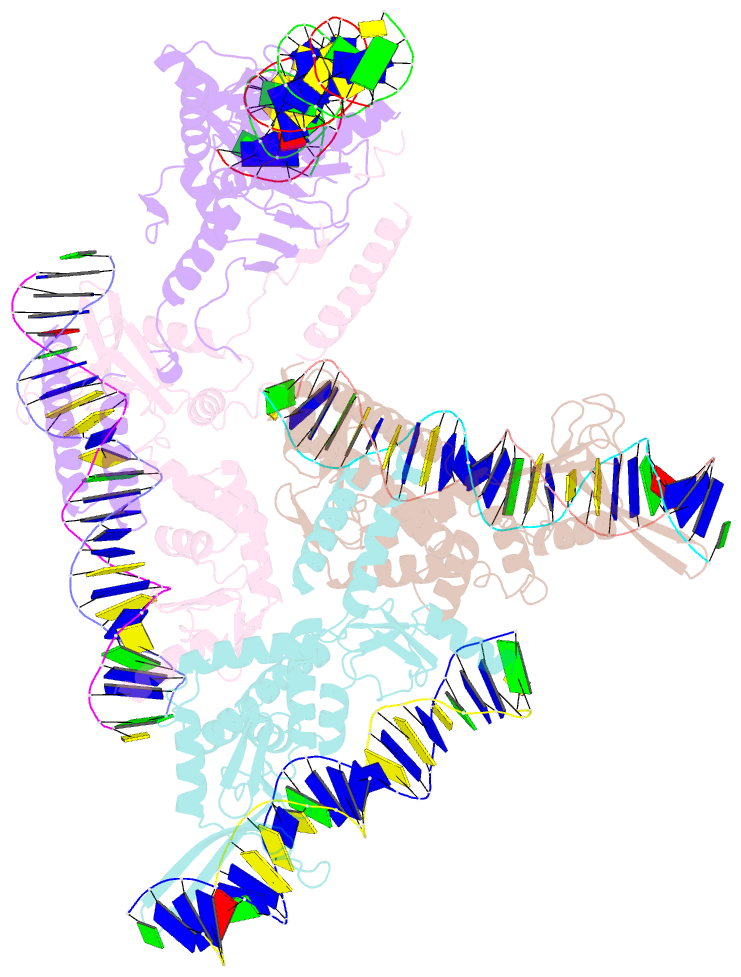Summary information and primary citation
- PDB-id
- 4kis; SNAP-derived features in text and JSON formats;
DNAproDB
- Class
- recombination-DNA
- Method
- X-ray (3.2 Å)
- Summary
- Crystal structure of a lsr-DNA complex
- Reference
- Rutherford K, Yuan P, Perry K, Sharp R, Van Duyne GD (2013): "Attachment site recognition and regulation of directionality by the serine integrases." Nucleic Acids Res., 41, 8341-8356. doi: 10.1093/nar/gkt580.
- Abstract
- Serine integrases catalyze the integration of bacteriophage DNA into a host genome by site-specific recombination between 'attachment sites' in the phage (attP) and the host (attB). The reaction is highly directional; the reverse excision reaction between the product attL and attR sites does not occur in the absence of a phage-encoded factor, nor does recombination occur between other pairings of attachment sites. A mechanistic understanding of how these enzymes achieve site-selectivity and directionality has been limited by a lack of structural models. Here, we report the structure of the C-terminal domains of a serine integrase bound to an attP DNA half-site. The structure leads directly to models for understanding how the integrase-bound attP and attB sites differ, why these enzymes preferentially form attP × attB synaptic complexes to initiate recombination, and how attL × attR recombination is prevented. In these models, different domain organizations on attP vs. attB half-sites allow attachment-site specific interactions to form between integrase subunits via an unusual protruding coiled-coil motif. These interactions are used to preferentially synapse integrase-bound attP and attB and inhibit synapsis of integrase-bound attL and attR. The results provide a structural framework for understanding, testing and engineering serine integrase function.





